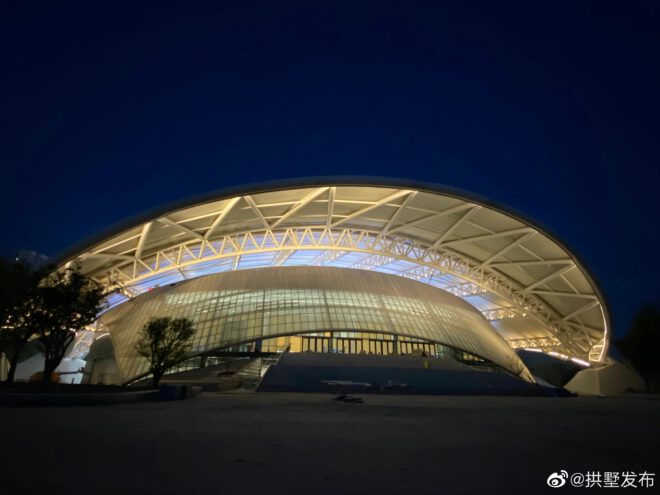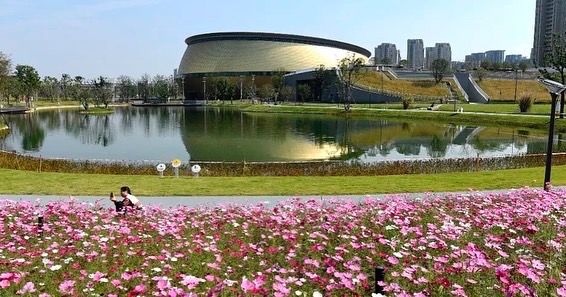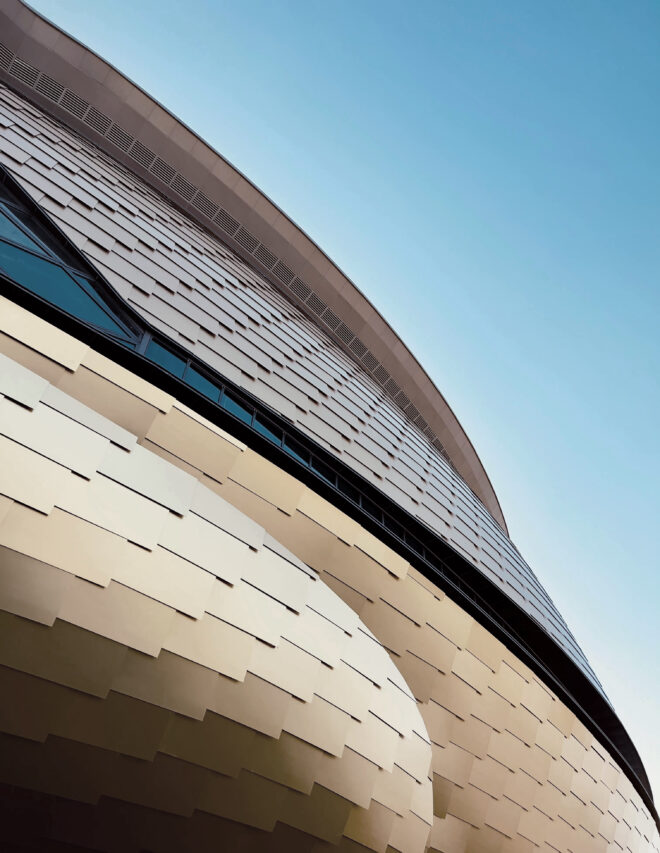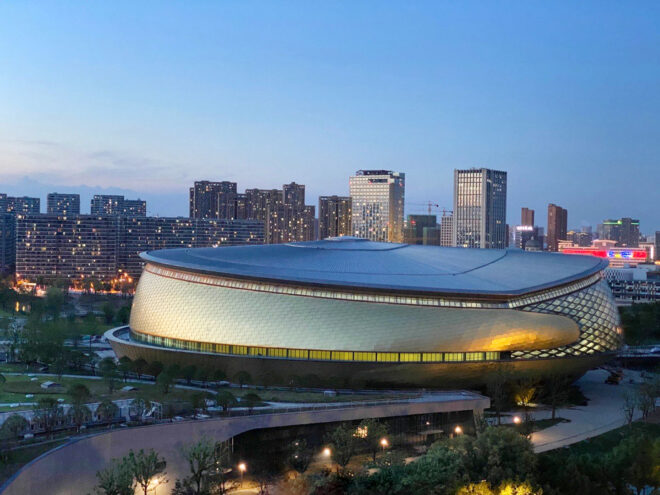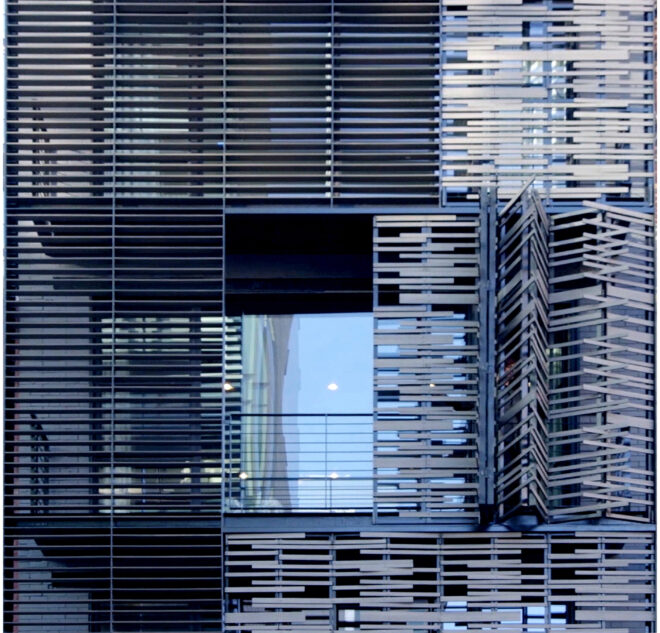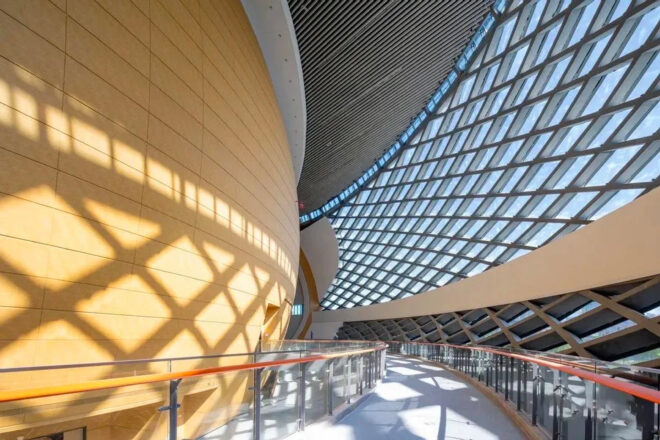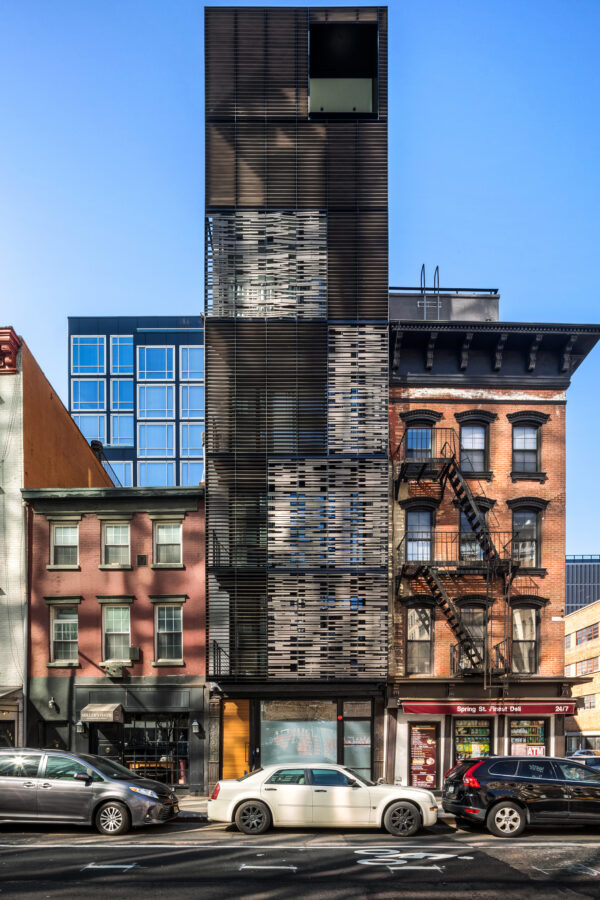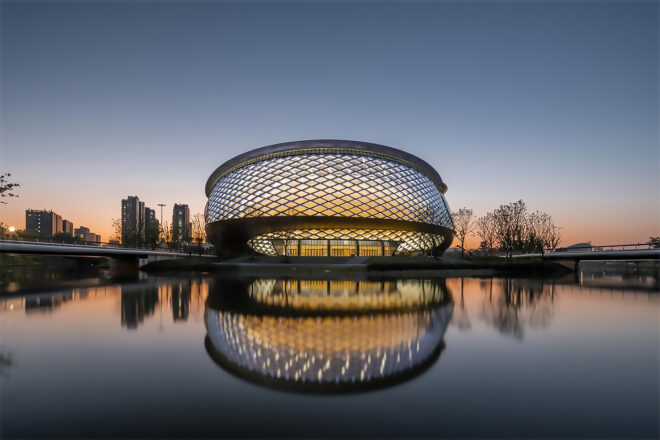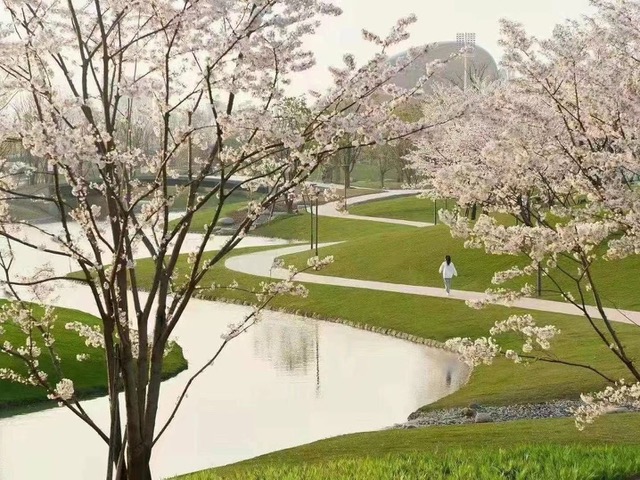A seasoned academic, designer and founder of Archi-Tectonics, Winka Dubbeldam is also serving as Chair and Miller Professor of Architecture at the University of Pennsylvania Stuart Weitzman School of Design. She is a speaker at the upcoming Disrupt Symposium which is going to be held on 1-3rd November 2022.
This article discusses the context of Winka’s upcoming presentation and is a dive into the strategies behind Archi-tectonics.
Disrupt Symposium is a go-to Business of Architecture event hand-crafted for architects, engineers and construction experts to share their experiences in practice operations.
We are creatives, excited about changing the world by delivering projects that shape our communities and urban spaces. But, oftentimes, we get overwhelmed by the business side of our profession, and since all around the world the AEC industry is lacking in business education – we all need to find our own answers. Oftentimes we feel alienated by this process since the topic of business and success is still taboo in this industry. This event is here to put a stop to that, and introduce an environment of learning and support in our community.
How do we do this?
By inviting to stage top-level executives and partners of key architecture practices, each of whom has been successful in their own right. Success has many facets and can be defined by many definitions. By deep diving into the diverse selection of practices, we unpack the values and strategies that drive their practice operations. With that, we hope to give our attendees permission to experiment and self-express in business through a variety of strategies. We hope that by discussing approaches to business we can encourage more confidence and authentic expression within how we operate our practices in the AEC sector, today. Join us at www.disruptsymposium.com and reserve your ticket now.
Photo credit: Archi-Tectonics
Archi-Tectonics was founded and is led by Winka, and is an internationally renowned company with many award-winning projects. The elegant designs stand out not only because of showcasing innovative solutions but also because of their use of sustainable materials and smart building systems. In addition to urban and architectural solutions, Archi-Tectonics also produces museum installations and residential buildings.
To create a gourmet working environment, Archi-Tectonics has a policy of not outgrowing its team. The reason behind this idea is for the firm to remain a research innovation hub. They achieve that through collaborating with multiple teams of people like landscape architects, engineers, sustainability consultants and others, to create and execute all projects seamlessly. With over 25 years of experience in the industry, Winka has a specific set of people that she collaborates with to carry out their research and designs. She believes that the reason behind their win in the Asian games is their non-traditional approach toward collaboration and partnership. Digital design has eliminated the boundaries between all professions and given a way to carry out the design process more effectively.
Photo credit: Asian Games Hybrid, Archi-Tectonics
For the Asian Games competition, Archi-Tectonics worked together with Thornton Tomasetti engineers and landscape architects. Archi-tectonics took the responsibility of paying all of its consultants in order to ensure a seamless working relationship. Despite maintaining a small but steady number of employees in the studio, Archi-Tectonics counts many more because it involves collaboration with several other experts in the AEC industry. Choosing a different path from how architecture used to be and creating a name for itself, the firm focuses on being a good team member and approaching any particular assignment as a team and not as an individual. To create the best, most radical, rigorous and smart designs, Archi-Tectonics chooses the best people in the industry to work with which eliminates the need to have more departments in the office while also having the most experienced people working on the project. The core of Winka’s policy for Archi-Tectonics is to keep the office small and research-centric. She believes that the role of architecture is to come up with innovations therefore she views her office as an innovation hub. The involvement of other agencies can be done by branching out of the office into the world and seeking for best suitable experts. Winka believes this approach to the business structure to be the way of the future. A big office with a series of departments is not the only way one can work on mega-design projects, and the work philosophy of Archi-Tectonics proves that. One can have a 1 or 2-storey firm with a small number of people who do what they do best in research and design while also developing a partnership with other companies in the industry. 20% of the total work involves research and design for the architect and the other 80% is going back and forth with the engineers to execute that.
Photo credit: Asian Games Hybrid, Archi-Tectonics
According to Winka, architects are scientists and artists, it is their job to do the research and innovation but to get those implemented, they need people who are visionary and daring to execute those ideas. The problem with architecture these days is that architects are pushed into a box of designers instead of recognised as researchers and artists. The traditional way based on the idea that the architect is the mastermind, charged with delivering the full solution is not the way Winka likes to work. She finds it interesting to involve a number of experts in the mix and work with top-notch talents.
This mode of operation also requires management and communication and Winka explains how her company does that. As an example, she uses the Asian Games Hybrid stadium located in Hangzhou, China. The project has a suspended roof which is thicker in the middle and gets thinner at the ends. The role of this construction is to support itself. To execute this design Thornton Tomasetti engineers helped in making the building column-free and developing a roof that would be self-supporting. The structure had to be durable not only from a structural perspective, but also to sustain a big cantilever hanging from indoors. This type of idea takes a team of people to execute.
Describing the business strategy, Winka believes that management along with communication and collaboration is the most important aspect of running a business.
Photo credit: Asian Games Hybrid, Archi-Tectonics
She jokingly adds:
“Being a great communicator between all stakeholders is basically in the job description of an architect.”
Working with digital design collaborations becomes easier by simply choosing the same method of working for every team involved. With the delivery of the Asian Games Hybrid stadium design, Archi-tectonics worked on the same 3D model. This model was shared by structural engineers, contractors, and BIM specialists from the very beginning. This allowed the multidisciplinary team to save time and resources, and when calculated the efficiency of this approach brought 1.2 million dollars in total project fee reduction, which was 20% of the costs. Winka recalls the satisfaction of the client when they found out about this measure. This was possible because the process was connected to BIM and had multiple agencies working on it to perfect it. With numerous complications that come with the design of the project, team members develop relationships which allow them to extend this relationship to other projects.
Photo credit: Archi-Tectonics
Archi-Tectonics has also worked with several startups and partners on branding design. A great example of this project is the Inscape Meditation Hub, for which the interiors are the extension of the branding graphics.
“There are enough buildings in the world and the ones that are designed now must be carefully thought about and must add value to society.” – says Winka.
To remain true to this belief, Archi-tectonics ensured that the Asian Games project in China can be designed such that it can serve the local community post its Olympic use. Archi-tectonics convinced their clients to turn the building into a concert hall, after the games. This ensured the building stayed in use years after the initial sport event.
Photo credit: Asian Games Hybrid, Archi-Tectonics
When asked about client acquisition, and selectivity around the projects the firm works for, Winka explained that in her eyes, there are only two ways one can become an architect: to take all the work one gets to make money or become an academic and work on desired projects while exploring the concepts. She acknowledges that the latter makes the process slower and comes with lesser money, but chooses that as she believes it’s integral to her scientific and academic side. Winka consciously chooses to work as an architect and a designer by making her firm not turn into a corporate office. She says that her business model is not to be corporate but act as an innovation hub. She believes that this very thing allows her clients to look at the work and choose to specifically hire them.
Photo credit: Archi-Tectonics
At Archi-Tectonics, Winka is the founder working along with Justin Korhammer, an architect and partner responsible for managing the day-to-day operations at the firm. All the services like accountants, PR and bookkeepers are kept out of the office because Winka believes that it is a really bad business model as it involves an endless stream of hiring and firing and it is simpler to keep that out of the architecture studio. Having said that all three roles are occupied by long-standing friends that Winka has built relationships with for years and trusts unconditionally.
Photo credit: Asian Games Hybrid, Archi-Tectonics
Winka separates academic research from the research she does at the firm. She runs a huge robotic lab at UPenn which she founded in 2015. She is the director of RE which is the Advanced Research and Innovation Centre. The department works with carbon fibre-reinforced concrete, which is a very lightweight and durable material. Research is done with some of the most advanced concrete companies and as a director, Winka is responsible for sourcing the funding, and material donations. The companies donate money to the lab and the lab helps them in their research. The companies often collaborate with Archi-Tectonics to work on other projects.
Winka is in academics because she wishes to change the course of architecture and the future of architecture. Architecture being a slow profession is in constant need of innovation because things of the past need to change and the architecture industry today causes the biggest carbon footprint in the world. So, the responsibility for change lies upon everyone. She does her small part by educating young professionals and students to make them strive for change. She hires professors and creates a huge team of experts who are aware of this responsibility. She exercises a similar strategy in her firm as well and focuses on shaping good architects, at times the firm also collaborates with its former employees and maintains that network of people who have already worked at the firm and Winka believes in supporting them as well.
Photo credit: Archi-Tectonics
Winka balances different hats on a day-to-day basis from running a successful design studio to curating the curriculum and collaborating with people at the University. She sees work as work and separates academics from practice.
She said, “I never thought I wanted to be the boss of anything. I prefer to collaborate with others.”
Working at UPenn Winka realized that curating the course and hiring the right people for that is also one kind of a project. The chair is just the instigator, but the actual decisions are taken by the standing faculty, by committees. It shouldn’t be hierarchical; people say chairs have power and that is the wrong description of the job because it is a horizontal organization that is based on really smart people.
Photo credit: Asian Games Hybrid, Archi-Tectonics
As people that care about not only the industry but also the well-being of professionals, several shifts need to be brought into the fraternity. The common notion of pulling an all-nighter for architects to finish their work is not what Winka agrees with. The idea of having to kill oneself to work is baseless. While managing a company if one organizes their work accordingly, streamlines the teams and has good meetings coordination of tasks is effortless. Managing an all-nighter makes people sloppy and tired and should only be done when it is necessary.
Another important point Winka believes in is that design and research is the tool for architects to implement, learn and grow; it is the language for architects. One cannot just be associated with a singular idea so either sustainability or diversity, it is through design and research that a change can be brought about in the industry.
“We as architects only have certain tools at our disposal and unlike social workers and politicians, we cannot start preaching them. Hence, these tools should not be kicked out of architecture and design schools. If an architect wants to stay in the profession, design and research is the tool to bring about change with clients, change in climate, help in designing better buildings and work for social equity in the industry.” – Winka Dubbeldam
Winka will give her presentation at the next Disrupt Symposium, where she will head-line together with Ben van Berkel of UnStudio. She will use case study examples of projects executed under Archi-tectonics in the past and share with the audience ways in which these projects were attracted and managed. She will discuss the operational structure of the organization in more detail and be available for an in-person Q&A after the session. To attend life, make sure to buy your ticket today at www.disruptsymposium.com
Winka will be joined by C-level directors and leaders of key architecture practices like Grimshaw, Herzog de Meuron, HKS, HOK, Mace, OfficeUntitled, K-Studio and more. The event takes place on 1-3rd Nov 2022 and it’s a fully virtual happening. Upon joining you get access to the live Zoom webinar, taking place between 19:00 and 22:00 o’clock, Central European Time.
Don’t miss this opportunity to learn about business and enhance your practice operations acumen. See you there!
READ ALSO: ciguë x Cowboy, Bon Marché, Paris Rive Gauche | Excerpts from an interview with Alphonse Sarthout, founder of ciguë, and Tanguy Goretti, founder of Cowboy.
